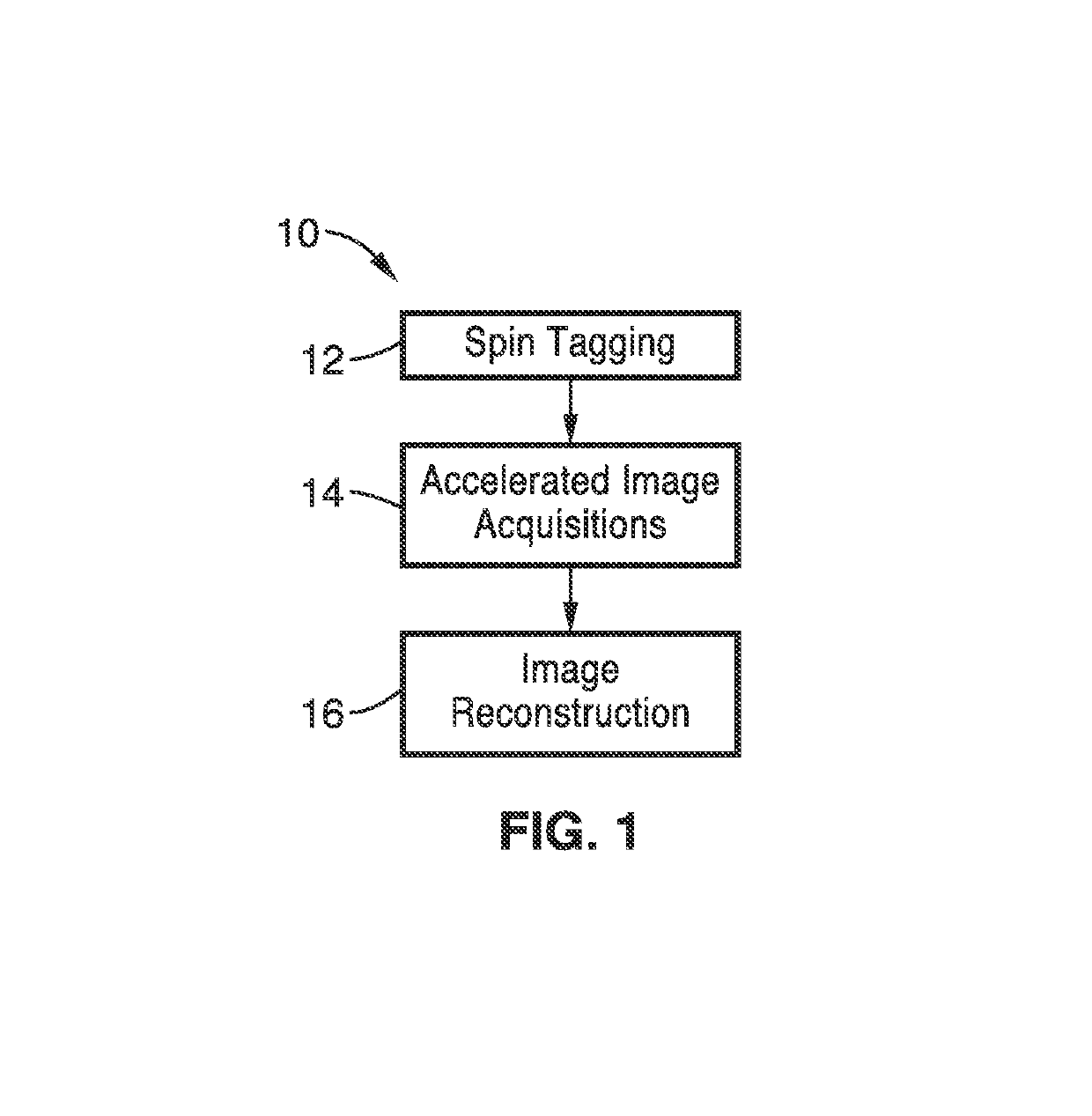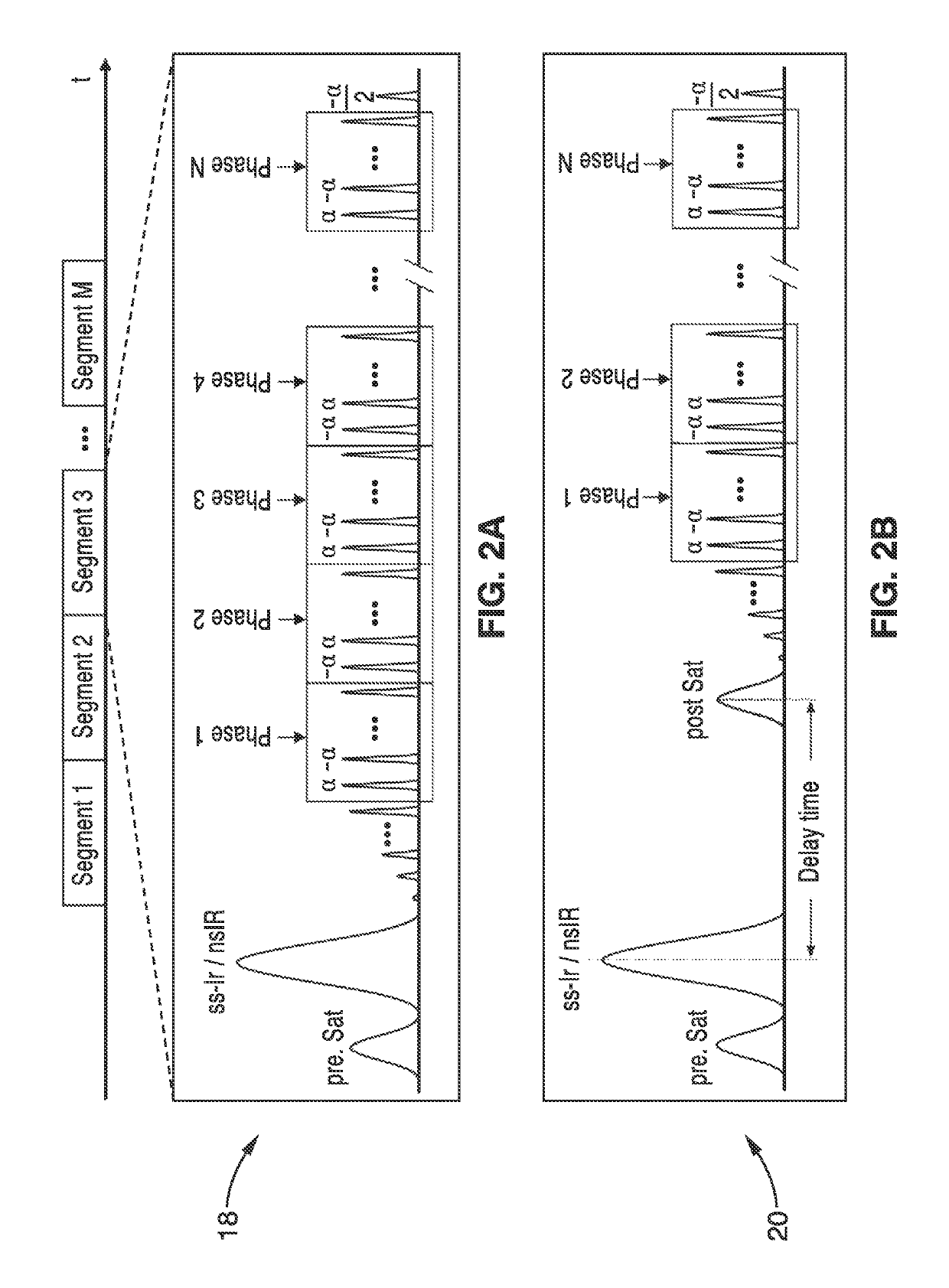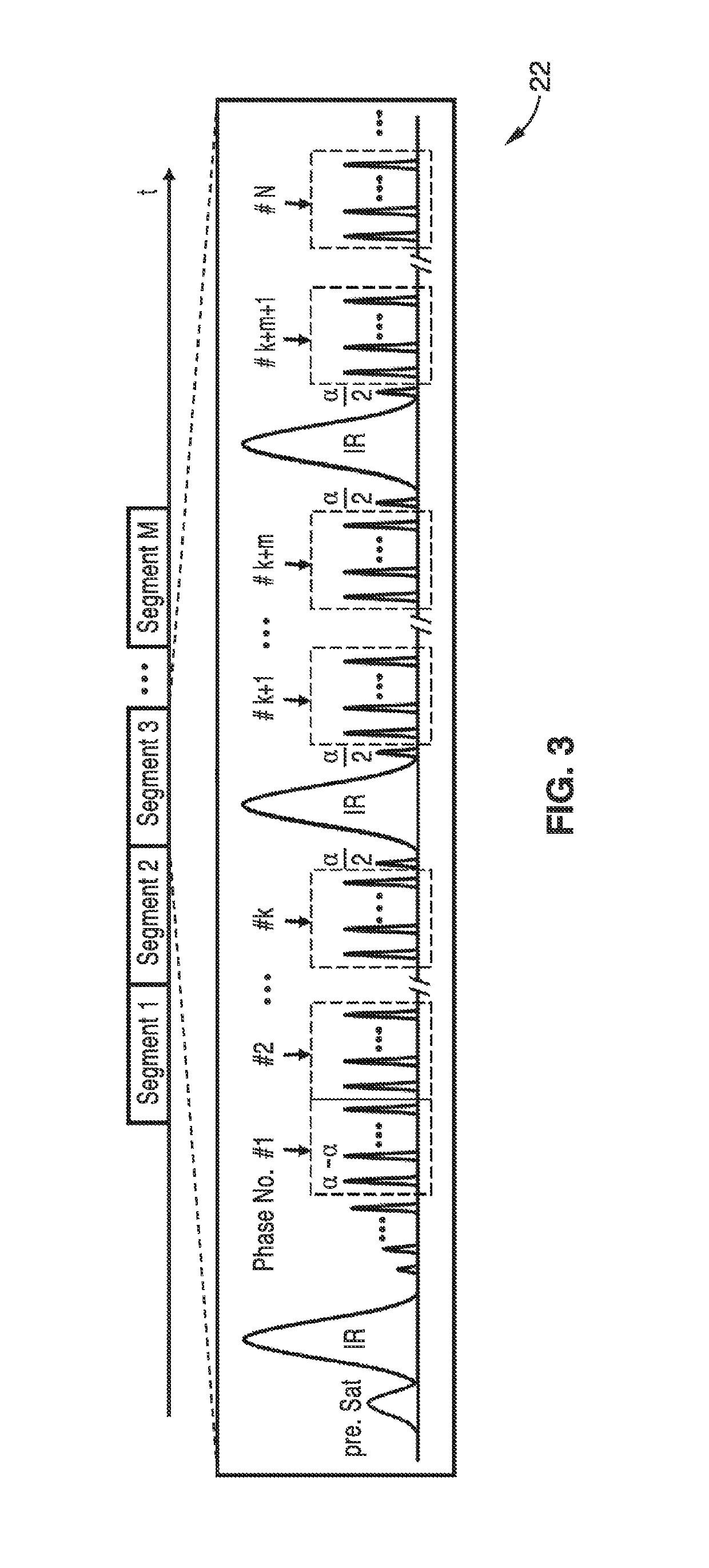Noninvasive 4-D time-resolved dynamic magnetic resonance angiography
a dynamic magnetic resonance and time-resolved technology, applied in the field of magnetic resonance imaging, can solve the problems of invasive dsa procedure, difficult to derive quantitative hemodynamic information using either dsa and/or ce-dmra procedures, and associated risks of allergic and other adverse reactions, and achieve high spatial and temporal resolution, adequate snr, and high degree of efficiency and flexibility
- Summary
- Abstract
- Description
- Claims
- Application Information
AI Technical Summary
Benefits of technology
Problems solved by technology
Method used
Image
Examples
example 1
[0049]In order to demonstrate the functionality of the spin labeling aspects of the invention, a FISP-based spin tagging with alternating radiofrequencies (STAR) labeling sequence was evaluated and the spatial and temporal resolution of the method was optimized in eight healthy volunteers. In another six healthy volunteers, the contrast-to-noise ratio (CNR) and signal-to-noise ratio (SNR) of the STAR based dynamic MR angiography images were compared with those acquired by using a standard Look-Locker echo-planar technique by using the Wilcoxon signed rank test. Finally, one patient with an arteriovenous malformation (AVM) was studied using this technique.
[0050]As shown in the pulse sequence diagrams of FIG. 2A and FIG. 2B, immediately following a section-selective or nonselective hyperbolic secant inversion pulse, a train of 20 dummy radiofrequency pulses with Kaiser Bessel window ramp flip angles (i.e., α / 21, −2α / 21, 3α / 21, . . . , 20α / 21) was applied to minimize transient signal o...
example 2
[0057]To further demonstrate the invention, two experiments were conducted with eight healthy volunteers (24.6±3.6 yrs, 3 males) on a Siemens TIM Trio 3T scanner. In the first experiment, a three-bolus STAR sequence was implemented with the time interval of 210, 315, 420 and 525 ms between inversion pulses respectively. The tagging was applied to an 80 mm slab inferior to the image slab with a 20 mm gap. The rest parameters were: FOV=220×165 mm2, resolution=1×1×1.5 mm3, rate-2 GRAPPA; a 3D slab of 40 slices with 1.5 mm thickness, 22 phases from 150 to 2370 ms with a step of 105 ms was acquired within a total scan time of 7 minutes.
[0058]The second experiment made a comparison of the optimized multi-bolus dMRA with standard single-bolus PASL and pCASL based dMRA. The phase interval of 4 (420 ms) between inversion pulses was chosen for multi-bolus dMRA, with the rest parameters identical to the protocol used in the first experiment. For comparison, a standard single-bolus STAR sequenc...
example 3
[0061]The ultrafast 4D dMRA methods were further demonstrated with an embodiment employing a 3D stack-of-stars golden-angle radial acquisition in conjunction with temporal filtering strategies of k-space weighted image contrast (KWIC) to achieve 4D dMRA with high spatial and temporal resolution, adequate SNR, and high temporal fidelity. Dynamic radial acquisition with a golden angle view increment is ideally suited for 4D dMRA, given its high degree of efficiency and flexibility for retrospective dynamic image reconstruction.
[0062]The pulse sequence that was used consisted of a continuous 3D TrueFISP readout following either slice-selective or non-selective inversion pulses. A dynamic 3D radial stack-of-stars sampling with an in-plane view angle increment of θg=111.25° (golden angle) was utilized as illustrated in FIG. 4. A 3D radial stack-of-stars sampling was achieved by taking multiple shots, where each shot represented a slice-encoding step. The imaging parameters were as follow...
PUM
 Login to View More
Login to View More Abstract
Description
Claims
Application Information
 Login to View More
Login to View More - R&D
- Intellectual Property
- Life Sciences
- Materials
- Tech Scout
- Unparalleled Data Quality
- Higher Quality Content
- 60% Fewer Hallucinations
Browse by: Latest US Patents, China's latest patents, Technical Efficacy Thesaurus, Application Domain, Technology Topic, Popular Technical Reports.
© 2025 PatSnap. All rights reserved.Legal|Privacy policy|Modern Slavery Act Transparency Statement|Sitemap|About US| Contact US: help@patsnap.com



